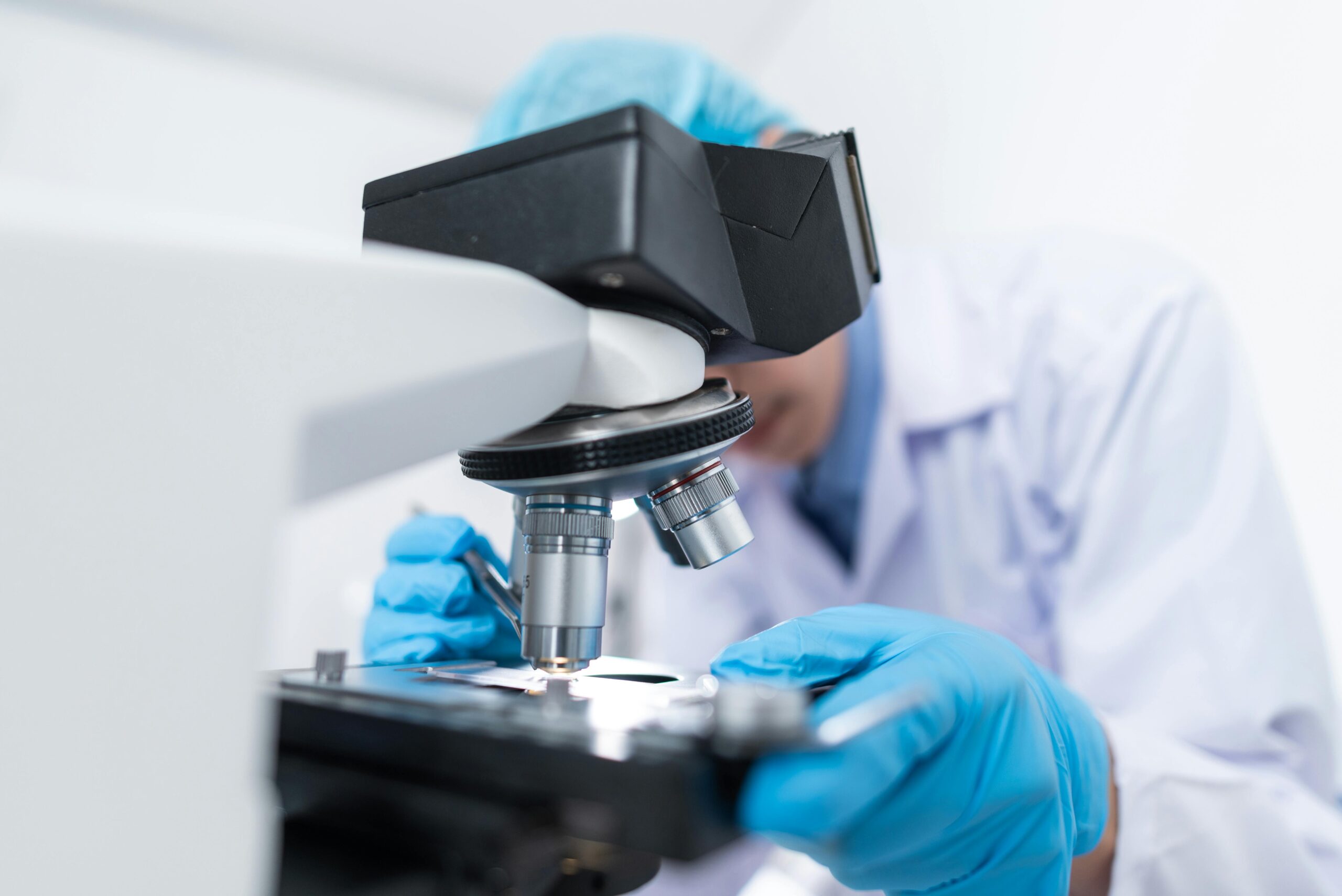The future of medicine is being rewritten at the cellular level, where innovative biomaterials and scaffold designs are creating unprecedented opportunities for tissue regeneration and healing.
Regenerative medicine stands at the forefront of healthcare innovation, promising to transform how we treat injuries, diseases, and age-related degeneration. By harnessing the power of advanced biomaterials and sophisticated scaffold architectures, scientists and clinicians are developing solutions that work harmoniously with the body’s natural healing processes. This revolutionary approach goes beyond traditional treatments, offering hope for conditions once considered irreversible and paving the way for a healthier, more resilient future.
🔬 The Foundation of Scaffold-Based Regenerative Medicine
Scaffolds serve as temporary three-dimensional structures that guide tissue regeneration by providing physical support and biochemical cues to cells. These engineered frameworks mimic the natural extracellular matrix, creating an environment where cells can attach, proliferate, and differentiate into functional tissue. The success of regenerative therapies depends heavily on scaffold design, which must balance mechanical strength, biocompatibility, and degradation rates perfectly synchronized with new tissue formation.
Modern scaffold design has evolved far beyond simple structural support. Today’s advanced scaffolds incorporate multiple functionalities, including controlled drug release, growth factor delivery, and responsive properties that adapt to the healing environment. This multifunctional approach accelerates tissue regeneration while minimizing complications and immune responses that plagued earlier attempts at tissue engineering.
Key Properties of Effective Scaffolds
The ideal scaffold possesses several critical characteristics that determine its success in regenerative applications. Biocompatibility ensures that the material doesn’t trigger adverse immune responses, while biodegradability allows the scaffold to gradually dissolve as natural tissue replaces it. Mechanical properties must match the target tissue, whether supporting the robust structure of bone or the flexible nature of cardiovascular tissue.
Porosity and pore interconnectivity play vital roles in facilitating cell infiltration, nutrient transport, and waste removal. Without adequate porosity, cells in the scaffold’s interior would suffer from insufficient oxygen and nutrient supply, leading to necrosis rather than regeneration. Advanced manufacturing techniques now enable precise control over pore size, distribution, and geometry, optimizing conditions for specific tissue types.
💡 Biomaterial Innovation Driving Medical Breakthroughs
The biomaterial landscape has expanded dramatically, offering researchers an extensive toolkit for creating next-generation regenerative solutions. Natural polymers like collagen, chitosan, and hyaluronic acid provide excellent biocompatibility and biological recognition signals. These materials naturally interact with cells, promoting adhesion and migration while supporting the body’s innate healing mechanisms.
Synthetic polymers such as polylactic acid (PLA), polyglycolic acid (PGA), and their copolymers offer superior mechanical properties and predictable degradation profiles. Unlike natural materials, synthetic polymers can be precisely engineered to achieve specific performance characteristics, from degradation rates measured in weeks to those spanning years. This control allows clinicians to tailor treatments to individual patient needs and specific tissue requirements.
Hybrid and Composite Biomaterials
The most exciting developments emerge from combining natural and synthetic materials, creating hybrid scaffolds that leverage the strengths of both approaches. These composite biomaterials offer biological activity alongside mechanical robustness and manufacturing consistency. For example, collagen-reinforced synthetic polymer scaffolds provide cell recognition sites while maintaining structural integrity under physiological loads.
Ceramic-based biomaterials, particularly hydroxyapatite and tricalcium phosphate, have revolutionized bone regeneration. Their chemical similarity to natural bone mineral facilitates osteointegration, while their mechanical properties can support load-bearing applications. When combined with polymer matrices, these ceramic composites create scaffolds that promote bone formation while gradually transferring mechanical loads to newly formed tissue.
🎯 Advanced Manufacturing Techniques Reshaping Possibilities
Three-dimensional bioprinting represents perhaps the most transformative technology in scaffold fabrication. This technique allows layer-by-layer construction of complex architectures with microscale precision, incorporating cells directly into the scaffold structure. Bioprinting enables creation of patient-specific implants based on medical imaging data, ensuring perfect anatomical fit and optimized mechanical integration.
Electrospinning produces nanofibrous scaffolds that closely mimic the natural extracellular matrix’s fibrous structure. This technique creates materials with exceptionally high surface area-to-volume ratios, enhancing cell attachment and nutrient exchange. The resulting nanofibers can be aligned to guide tissue organization, particularly valuable for engineering oriented structures like nerves, muscles, and tendons.
Emerging Fabrication Technologies
Freeze-drying, or lyophilization, creates highly porous scaffolds with interconnected pore networks through controlled ice crystal formation and sublimation. This cost-effective technique produces scaffolds with excellent cell infiltration characteristics, though with less precise control over architecture compared to bioprinting. Modifications to freezing parameters allow some customization of pore size and orientation.
Microfluidic fabrication enables creation of microsphere-based scaffolds and generation of controlled microenvironments within larger structures. This approach produces injectable scaffolds that can be delivered minimally invasively, conforming to irregular defect geometries. The technology also facilitates controlled release systems where therapeutic agents are encapsulated within degradable microspheres for sustained delivery.
🏥 Clinical Applications Transforming Patient Outcomes
Orthopedic regenerative medicine has witnessed remarkable progress through scaffold-based approaches. Bone grafts incorporating bioactive scaffolds now facilitate healing of critical-size defects that would never heal naturally. These scaffolds release growth factors like bone morphogenetic proteins at precisely controlled rates, stimulating bone formation while providing mechanical support during the healing process.
Cartilage regeneration presents unique challenges due to this tissue’s limited natural healing capacity and avascular nature. Advanced scaffolds designed for cartilage repair incorporate mechanical properties matching native cartilage while providing biochemical signals that guide chondrocyte differentiation. Some designs feature zonal structures that replicate cartilage’s natural organization, improving integration with surrounding tissue and long-term functionality.
Cardiovascular Tissue Engineering
Cardiac tissue regeneration addresses one of medicine’s most pressing challenges, as heart disease remains a leading cause of mortality worldwide. Engineered cardiac patches using biomaterial scaffolds seeded with cardiomyocytes show promise for repairing damage from myocardial infarction. These patches must match the heart’s mechanical properties, maintain electrical conductivity, and integrate with native tissue without triggering arrhythmias.
Vascular grafts fabricated from biodegradable scaffolds offer solutions for patients requiring bypass surgery or dialysis access. Unlike synthetic grafts that remain permanent foreign bodies, these regenerative alternatives gradually transform into natural blood vessels as cells infiltrate and remodel the scaffold. This approach reduces long-term complications like thrombosis and infection while providing growth potential crucial for pediatric applications.
🧬 Stem Cell Integration and Cellular Therapies
Scaffolds serve as delivery vehicles and guidance systems for stem cell therapies, addressing challenges that have limited cell-based treatments. When stem cells are simply injected, poor retention and survival rates dramatically reduce therapeutic efficacy. Scaffold-mediated delivery protects cells from the hostile injury environment while providing structural cues that direct differentiation toward desired cell types.
Mesenchymal stem cells combined with osteoconductive scaffolds have shown exceptional results in bone regeneration, with some clinical trials demonstrating outcomes superior to traditional bone grafting. The scaffold provides immediate mechanical support while stem cells secrete growth factors and differentiate into osteoblasts, accelerating healing and improving final tissue quality. This synergistic approach represents the future of regenerative orthopedics.
Induced Pluripotent Stem Cells and Personalized Medicine
The combination of induced pluripotent stem cells (iPSCs) with patient-specific scaffold designs enables truly personalized regenerative treatments. iPSCs derived from a patient’s own cells eliminate immune rejection concerns while offering pluripotent differentiation potential. When seeded onto custom-designed scaffolds, these cells can regenerate complex tissues matching the patient’s unique anatomy and cellular characteristics.
Organoid culture within three-dimensional scaffolds has opened new frontiers in disease modeling and drug testing. These miniature organ-like structures grown from stem cells on specialized scaffolds recapitulate many aspects of native organ function, providing unprecedented platforms for studying disease mechanisms and screening therapeutic candidates. This approach accelerates drug development while reducing reliance on animal testing.
⚡ Smart Biomaterials and Responsive Scaffolds
The next generation of scaffolds incorporates “smart” materials that respond to environmental stimuli, adapting their properties based on the healing process’s needs. Temperature-responsive polymers transition from liquid to gel at body temperature, enabling minimally invasive injection that solidifies in situ. pH-responsive materials adjust their degradation rates based on local inflammation levels, providing support longer in areas experiencing healing complications.
Electrically conductive scaffolds show particular promise for neural and cardiac tissue engineering, where electrical signaling plays crucial functional roles. These materials incorporate conductive polymers or carbon-based nanomaterials that facilitate electrical communication between cells while maintaining the biocompatibility and mechanical properties required for tissue integration. Early results suggest improved functional outcomes compared to electrically inert alternatives.
Drug-Eluting and Bioactive Scaffolds
Incorporating therapeutic agents directly into scaffold materials creates localized, sustained delivery systems that maximize efficacy while minimizing systemic side effects. Antibiotics released from scaffolds prevent infection at surgical sites, particularly valuable in orthopedic applications where infection can be catastrophic. Growth factors delivered from scaffolds maintain local concentrations within therapeutic windows for extended periods, impossible to achieve with systemic administration.
Gene delivery scaffolds represent an emerging frontier, releasing genetic material that instructs infiltrating cells to produce specific proteins supporting regeneration. This approach overcomes limitations of direct gene therapy by providing sustained, localized expression of therapeutic genes. Scaffolds can deliver multiple genetic signals in sequence, orchestrating complex regenerative programs that recapitulate natural developmental processes.
🌍 Addressing Global Healthcare Challenges
Regenerative medicine technologies must be accessible to benefit global populations, not just wealthy nations. Researchers are developing cost-effective scaffold manufacturing techniques using locally available materials and simpler production methods. Natural materials like silk fibroin and alginate offer excellent properties at lower costs than synthetic polymers, making regenerative treatments more economically viable for resource-limited settings.
Decentralized manufacturing approaches, including point-of-care bioprinting, could democratize access to customized regenerative treatments. As bioprinting technology becomes more affordable and user-friendly, hospitals in developing regions may produce patient-specific implants on-site rather than relying on expensive imported products. This capability would dramatically expand treatment availability while reducing costs and logistical challenges.
🔮 Future Directions and Emerging Technologies
Artificial intelligence and machine learning are beginning to revolutionize scaffold design by predicting material performance and optimizing architectures for specific applications. These computational tools analyze vast datasets from previous experiments, identifying patterns and relationships impossible for humans to discern. AI-guided design accelerates development timelines while improving success rates, bringing effective treatments to patients faster.
Four-dimensional bioprinting adds the dimension of time, creating structures that transform after implantation in response to physiological signals. These dynamic scaffolds might compress for minimally invasive delivery, then expand to fill defects, or change porosity as healing progresses. Such responsive behaviors could dramatically improve clinical outcomes by adapting to each patient’s unique healing trajectory.
Bioreactor Systems and Ex Vivo Tissue Maturation
Advanced bioreactor systems that replicate physiological conditions enable ex vivo tissue maturation before implantation. These sophisticated devices apply mechanical forces, maintain optimal nutrient conditions, and can even simulate electrical stimulation for cardiac or neural tissues. Pre-maturation improves initial graft function and accelerates integration, reducing the vulnerable period immediately after implantation when complications most commonly occur.
Perfusion-based bioreactors address limitations in engineering large, thick tissues by actively delivering nutrients throughout the scaffold interior. This technology has enabled creation of centimeter-scale tissue constructs that would otherwise develop necrotic cores. Scaling up tissue engineering to clinically relevant sizes represents a critical step toward organ replacement, potentially addressing the severe shortage of transplantable organs.

🚀 Accelerating Translation from Laboratory to Clinic
Regulatory frameworks are evolving to accommodate innovative regenerative products that don’t fit traditional device or drug classifications. Regulatory agencies worldwide are developing specialized pathways for combination products incorporating scaffolds, cells, and bioactive factors. Streamlined approval processes for low-risk applications balance patient safety with the urgency of bringing transformative treatments to those in need.
Clinical trial design for regenerative products presents unique challenges, as outcomes may take months or years to fully manifest and traditional placebo controls raise ethical concerns for serious conditions. Adaptive trial designs and innovative endpoint selection help address these challenges, while patient registries tracking long-term outcomes provide valuable real-world evidence supporting broader adoption of successful treatments.
The revolution in regenerative medicine powered by advanced scaffold design and biomaterial innovation offers genuine hope for millions suffering from injuries and diseases that currently have no cure. As research accelerates and technologies mature, the integration of smart materials, stem cells, and personalized designs will transform healthcare delivery. The journey from laboratory discovery to widespread clinical implementation continues, driven by dedicated researchers, innovative clinicians, and courageous patients willing to participate in trials. Together, these advances promise a future where damaged tissues and organs can be regenerated rather than merely managed, fundamentally changing what it means to heal and dramatically improving quality of life for people worldwide. The convergence of biology, materials science, and engineering is creating possibilities that seemed like science fiction just decades ago, and the pace of progress suggests even more remarkable breakthroughs lie ahead.
Toni Santos is a biotechnology storyteller and molecular culture researcher exploring the ethical, scientific, and creative dimensions of genetic innovation. Through his studies, Toni examines how science and humanity intersect in laboratories, policies, and ideas that shape the living world. Fascinated by the symbolic and societal meanings of genetics, he investigates how discovery and design co-exist in biology — revealing how DNA editing, cellular engineering, and synthetic creation reflect human curiosity and responsibility. Blending bioethics, science communication, and cultural storytelling, Toni translates the language of molecules into reflections about identity, nature, and evolution. His work is a tribute to: The harmony between science, ethics, and imagination The transformative potential of genetic knowledge The shared responsibility of shaping life through innovation Whether you are passionate about genetics, biotechnology, or the philosophy of science, Toni invites you to explore the code of life — one discovery, one cell, one story at a time.




